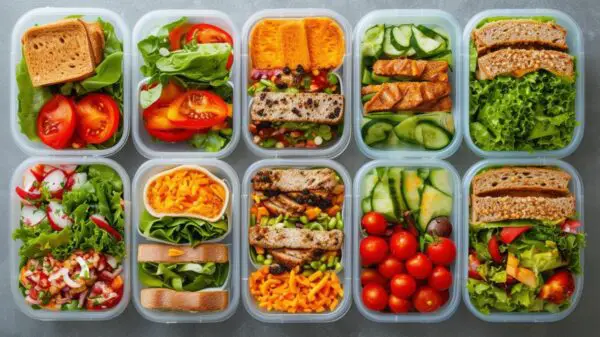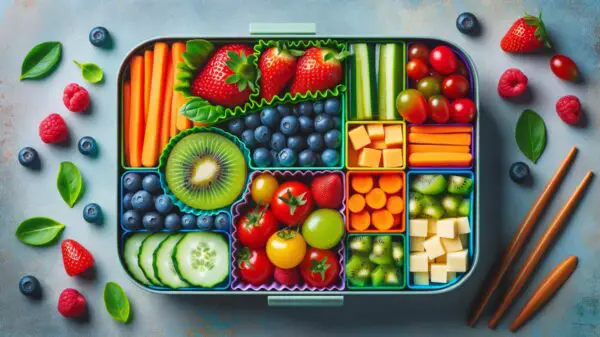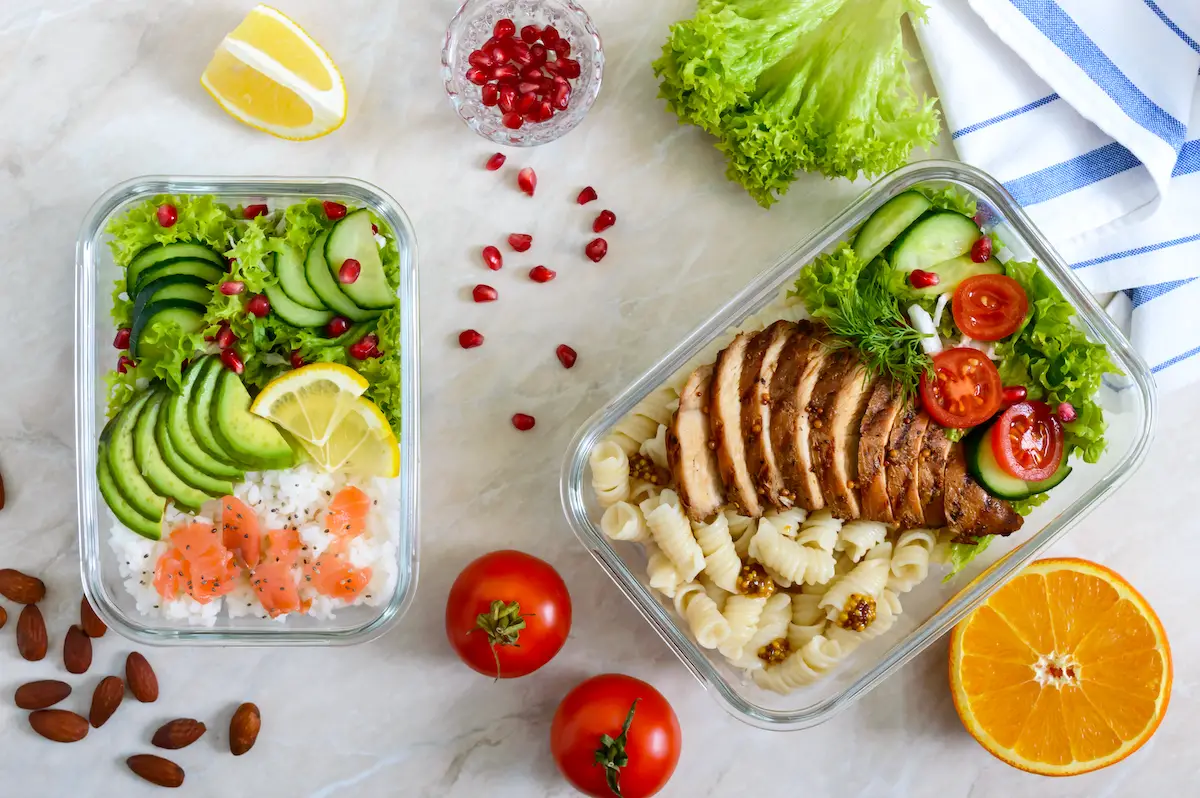Have you ever wondered how long you can keep cold items in an insulated lunch box before they go bad? It’s a common question that many people have, especially those who rely on lunch boxes to keep their food fresh and safe. In this article, we will explore the factors that affect the longevity of cold items in an insulated lunch box and provide you with some useful tips to ensure your food stays delicious and safe to eat. So let’s dive in and uncover the secrets to keeping your cold items fresh!
Factors Affecting the Longevity of Cold Items
Insulation Quality
The quality of insulation in your lunch box plays a crucial role in maintaining the desired temperature of your cold items. Insulated lunch boxes are designed to trap cool air inside and prevent external heat from entering. Higher-quality lunch boxes typically have better insulation, which allows them to keep your food colder for longer periods. When choosing an insulated lunch box, look for one that has thick insulation and a tight seal to ensure maximum effectiveness.
Initial Temperature of Cold Items
The initial temperature of your cold items also impacts how long they will stay fresh in the lunch box. It’s essential to pre-chill your food and beverages before placing them in the insulated container. By starting with colder items, you provide a head start in maintaining the desired temperature. This step is especially crucial if you’re planning to keep perishable items, such as dairy products or cooked meats, in your lunch box.
Ambient Temperature
The surrounding ambient temperature plays a significant role in determining how long your cold items will remain safe to eat. If you’re in a hot climate, the external temperature can quickly warm up the contents of your lunch box. On the other hand, if you’re in a cooler environment, the insulated lunch box can help maintain the cold temperature for a more extended period. It’s important to consider the ambient temperature when estimating the longevity of your cold items.
Frequency of Opening
Opening and closing the lunch box frequently can cause the internal temperature to fluctuate, leading to a shorter shelf life for your cold items. Every time you open the lunch box, warm air from the outside enters, and cold air escapes. To maximize the freshness of your cold items, try to minimize the number of times you open the lunch box. This means planning your meals and snacks in advance, reducing the need to constantly access your food.
Type of Cold Packs
Many insulated lunch boxes come with ice packs or gel packs designed to help maintain the cold temperature. The type and quality of these packs can affect the longevity of your cold items. Look for lunch boxes that include high-quality, long-lasting cold packs. Additionally, consider using multiple packs to distribute the cold evenly and increase the overall cooling capacity of your lunch box.

How Long Can I Keep Cold Items in an Insulated Lunch Box Before It Goes Bad?
Now, let’s address the question that brought you here: how long can you keep cold items in an insulated lunch box before they go bad? The answer depends on several factors, including the ones mentioned above. However, as a general guideline, you can expect your cold items to remain safe for consumption for approximately 2 to 4 hours.
It’s important to note that this time frame may vary depending on various circumstances. If you’re keeping your lunch box in a hot environment, the safe window might be shorter. On the other hand, in cooler temperatures, you may be able to extend the freshness of your cold items slightly beyond the typical range. It’s crucial to exercise caution and use your judgment when assessing the safety of your food.
To ensure the highest level of food safety, it’s recommended to consume your cold items within the recommended time frame. If you’re unsure about the freshness of your food, it’s better to err on the side of caution and discard anything that you suspect may have exceeded the safe window.
Tips for Extending the Shelf Life of Cold Items
While the general guideline for keeping cold items in an insulated lunch box is 2 to 4 hours, there are a few strategies you can implement to extend the shelf life of your food. Here are some helpful tips:
Use Additional Ice Packs
To enhance the cooling capacity of your lunch box, consider using additional ice packs or gel packs. These packs help maintain a lower temperature inside the box and can extend the freshness of your cold items. By strategically placing the packs around your food, you create a more effective cooling environment.
Freeze Your Food and Drinks
If you plan to keep your lunch box refrigerated for an extended period, consider freezing your food and drinks before placing them in the lunch box. This technique not only keeps your items colder for longer but also acts as an additional ice pack. As the frozen items thaw, they help maintain a lower temperature inside the lunch box, effectively extending the shelf life.
Store in a Cool Environment
When possible, store your lunch box in a cool environment. If you’re at work, find a spot away from direct sunlight and heat sources, such as radiators or ovens. Keeping your lunch box in a cool place can significantly slow down the temperature increase inside and help your cold items stay fresh for a more extended period.
Monitor the Temperature
Consider using a food thermometer to monitor the internal temperature of your cold items. This simple tool allows you to check if the food has reached unsafe temperatures. Keep in mind that perishable items should be kept below 40°F (4°C) to prevent bacterial growth. Regularly checking the temperature can help ensure the safety of your food.

FAQs
Q: Can I keep frozen items in my insulated lunch box?
A: Absolutely! Insulated lunch boxes are excellent for keeping frozen items cold. Just make sure to pack the frozen items close to ice packs or other frozen items to maintain a consistently low temperature.
Q: Can I put hot items in an insulated lunch box?
A: Insulated lunch boxes are primarily designed to keep cold items cold, but they can also help to some extent in keeping hot items warm. If you plan to put hot food in your lunch box, preheat the container by pouring boiling water into it and letting it sit for a few minutes. Then, empty the container and place your hot food inside. However, for maximum effectiveness, it’s recommended to use dedicated thermal containers for hot food.
Q: Can I use my insulated lunch box for perishable items like dairy and meat?
A: Yes, insulated lunch boxes are suitable for storing perishable items such as dairy and meat. However, it’s crucial to follow the recommended safe storage guidelines and consume the food within the appropriate time frame to ensure its freshness and safety.
Q: How does dental care impact my overall health when considering the storage of cold items in an insulated lunch box?
A: Dental care plays a crucial role in overall health, and it’s important to maintain regular check-ups with the dentist. Neglecting dental hygiene can lead to oral health issues like gum disease that may affect your ability to enjoy and digest food properly, including cold items stored in an insulated lunch box. Proper dental care ensures that you can maintain a healthy diet and enjoy your meals without discomfort.
Conclusion
In conclusion, the longevity of cold items in an insulated lunch box depends on various factors, including insulation quality, initial temperature, ambient temperature, frequency of opening, and type of cold packs. While the general guideline is to consume your cold items within 2 to 4 hours, you can take steps to extend their shelf life such as using additional ice packs or freezing your food and drinks.
Remember to always prioritize food safety and use your judgment when assessing the freshness of your cold items. When in doubt, it’s better to discard anything you suspect may have gone bad. With proper care and attention, your insulated lunch box can be a reliable companion for keeping your cold items delicious and safe to eat.




























